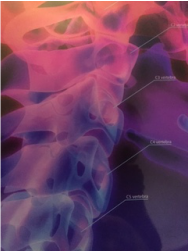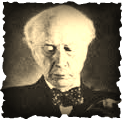
A new study is being posted on many Alexander Technique websites. And, for those of us who have known this work for a while, we might say, “duh!”
The specific study being cited is – “Assessment of Stresses in the Cervical Spine Caused by Posture and Position of the Head” by Kenneth k. Hansraj, MD Chief of Spine Surgery, New York Spine Surgery and Rehabilitation Medicine, published in SURGICAL TECHNOLOGY INTERNATIONAL XXV.(abstract accessed at https://cbsminnesota.files.wordpress.com/2014/11/spine-study.pdf)
When I read the abstract, while I was in agreement with its conclusions -
Loss of natural curve of the cervical spine s leads to incrementally increased stresses about the cervical spine. These stresses may lead to early wear, tear, degeneration, and possibly surgeries. While it is nearly impossible to avoid the technologies that cause these issues, individuals should make an effort to look at their phones with a neutral spine and to avoid spending hours each day hunched over.
I was concerned by some of its content. I note several things. It is not a study of actual people – it is a modeling study - A model of the cervical spine was created with realistic values in Cosmosworks, a finite element assessment package. And the table provided with the abstract does look like only the cervical spine was included in the model. While the whole spine is pictorially represented, what the other vertebra are doing in response to the tilting of the head doesn’t make much sense in movement. I also note that in this particular abstract, what is suggested as good posture - perhaps what they mean by neutral spine- is hopefully something no Alexander Technique teacher would ever teach!
The writers of the study acknowledge that this is an initial study, and I applaud their call to their own profession to consider the whole picture of cervical pain. And, I do think that if we as Alexander Technique teachers are going to reference studies to promote the work, it is a good idea to read the abstract and/or the whole study so that we can discuss it more fully.
That said, I just spent a day with my sister who teaches elementary school. Children in her school have carpal tunnel syndrome from texting. Little kids in pain!
What I watch over and over again are people, including children, imitating what they look at all the time – and the smaller the device, the smaller they try to become. I have noted in other articles that there seem to be costs not only in discomfort, but also in self-image, thinking skills, and imaginative skills. The abstract for this study does refer to these consequences as well. (And there is information in my just-about-to-be-available book -http://www.cathymadden.net/onstage-synergy.html - on my work in this area.) We are playing catch-up with how we humans interface with our devices – and the Alexander Technique is a fabulous tool for that catch-up.
What is called into question is how we teach our children to interface with these devices. While I believe that computers are poor tools for children (really, I think that developmentally 14 years old is plenty early enough to be at a computer or on a cell phone), I know that my belief prompts an uphill discussion in today’s world. What educators need now is a new approach to how movement (rather than posture) is vital in development. I am absolutely delighted when an elementary school teacher takes Alexander Technique classes, workshops, and lessons because I know that has an effect in their classrooms. And I am considering – both for myself and for the Alexander Technique profession - ways to increase our reach to educators– they need it for themselves, they need it for their students.

 RSS Feed
RSS Feed